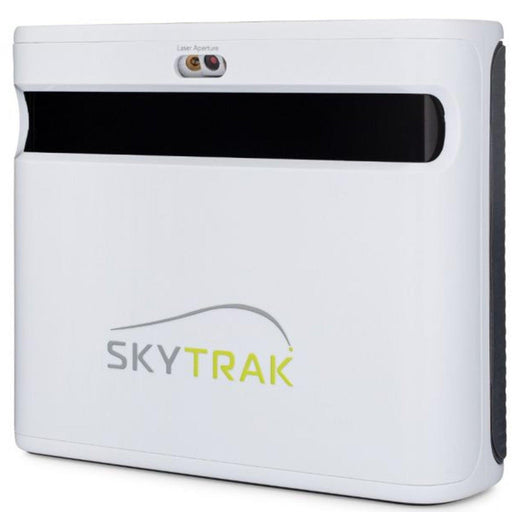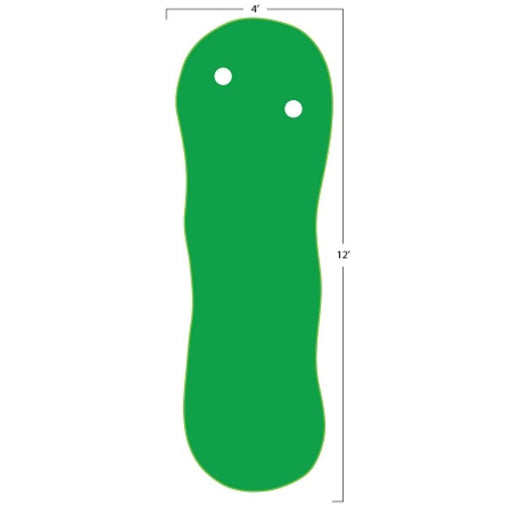Now through January 5th 15% OFF our very popular Vanish and Parlour Enclosures. Coupon code 15SWINGMASS

Navigating the Right Contours for Your Skill Level
Mastering the art of putting is a journey that involves honing not only your stroke but also understanding the contours of the green. Choosing the right putting green contours tailored to your skill level is a critical aspect of perfecting your short game. In this blog post, we'll delve into the nuances of selecting the ideal putting green contours that align with your skill level, helping you elevate your putting prowess to new heights.
The Essence of Putting Green Contours:
The contours of a putting green play a pivotal role in determining the path and speed of your putt. The undulations, slopes, and breaks present unique challenges that demand precision and a keen understanding of your own skill level. Let's explore how to navigate the right putting green contours based on your proficiency.
1. Beginner's Approach: Gentle Slopes and Straight Lines
For those starting their putting journey, it's advisable to begin with a putting green featuring gentle slopes and relatively straight lines. These contours offer a forgiving surface, allowing beginners to focus on developing a consistent putting stroke without the complexities of severe breaks.
2. Intermediate Challenge: Moderate Undulations and Slopes
As you progress to an intermediate skill level, introducing moderate undulations and slopes becomes beneficial. This adds a layer of challenge, requiring players to read the green more attentively. The intermediate contours help refine distance control and enhance your ability to assess the subtle nuances of the putting surface.
3. Advanced Mastery: Complex Breaks and Varied Terrain
Advanced golfers seeking to master the intricacies of putting should opt for putting greens with complex breaks and varied terrain. These contours replicate the challenges encountered on professional courses, demanding a high level of skill in reading the green, adjusting for breaks, and executing precise putts.
Tips for Choosing the Right Putting Green Contours:
- Evaluate Your Current Skill Level:
- Be honest about your current putting skill level. Choosing contours that align with your proficiency ensures that you enjoy a challenging yet rewarding practice experience.
- Consider Consistency:
- Focus on practicing on greens with consistent contours initially. This helps in developing a reliable putting stroke before tackling more intricate challenges.
- Gradual Progression:
- If you're transitioning between skill levels, consider a putting green with progressive contours. This allows for a gradual increase in difficulty, facilitating a smoother transition as your putting skills evolve.
- Observe Break Patterns:
- Pay close attention to the break patterns on the putting green. Understanding how slopes influence the roll of the ball is crucial for effective green reading.
- Utilize Adjustable Putting Mats:
- Invest in adjustable putting mats that allow you to customize the contours based on your practice goals. This flexibility enables you to adapt the green to your evolving skill level.
Crafting Your Putting Journey
In conclusion, choosing the right putting green contours is akin to crafting a personalized journey to putting mastery. Whether you're a beginner aiming for consistency, an intermediate player refining your green-reading skills, or an advanced golfer seeking complex challenges, the contours you select play a pivotal role in your development. Assess your skill level honestly, embrace a gradual progression, and observe break patterns diligently. With the right putting green contours, you'll not only refine your putting technique but also elevate your overall golfing experience. Happy putting!

Have Questions About Golf Simulators?
Our expert team is here to help you find the perfect golf simulator for your needs.
Featured products
-
SkyTrak+
Original price $2,995.00 - Original price $3,145.00Original price$2,995.00 - $3,145.00$2,995.00 - $3,145.00Current price $2,995.00Introducing the SkyTrak+ Launch Monitor: Unmatched Accuracy and Advanced Features Experience a new level of precision and innovation with the SkyTr...
View full details -
ProTee Majestic Simulator Package
Original price $9,618.00 - Original price $13,848.00Original price$9,618.00 - $13,848.00$9,618.00 - $13,848.00Current price $9,618.00ProTee Majestic Golf Simulator Package: Elevate Your Indoor Golf Experience Transform your home or business into a golfer’s dream with the ProTee M...
View full details -
Eagle Golf Mat
Original price $370.00 - Original price $1,130.00Original price $370.00$370.00$370.00 - $1,130.00Current price $370.00Introducing the Eagle Golf Mat: The Ultimate Golf Experience Are you passionate about golf and demand nothing but the very best in your practice eq...
View full details -
Retractable HomeCourse® Golf ProScreen 180
Original price $2,299.00Original price $2,299.00 - Original price $2,299.00Original price $2,299.00Current price $1,999.00$1,999.00 - $1,999.00Current price $1,999.00HomeCourse® Golf ProScreen 180 HomeCourse® Golf ProScreen 180 is a retractable golf screen and enclosure. HomeCourse® Golf ProScreen 180's ballisti...
View full details -
The Augusta V2 4'x12' 2 Cups
Original price $399.00Original price $399.00 - Original price $399.00Original price $399.00Current price $329.00$329.00 - $329.00Current price $329.00The Augusta is one of Big Moss’ traditional models. It offers unmatched versatility for teaching and year round practice. Make a long-term investme...
View full details





